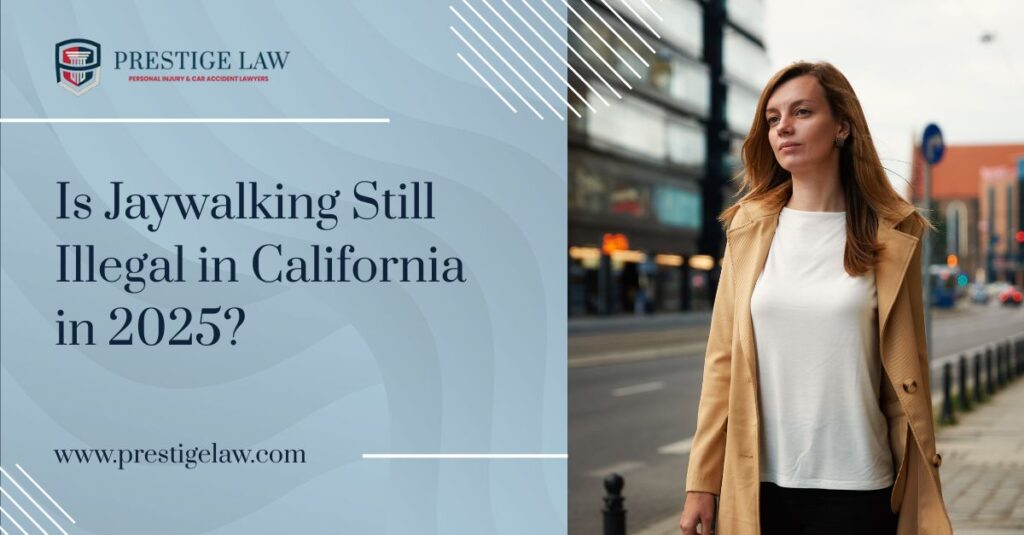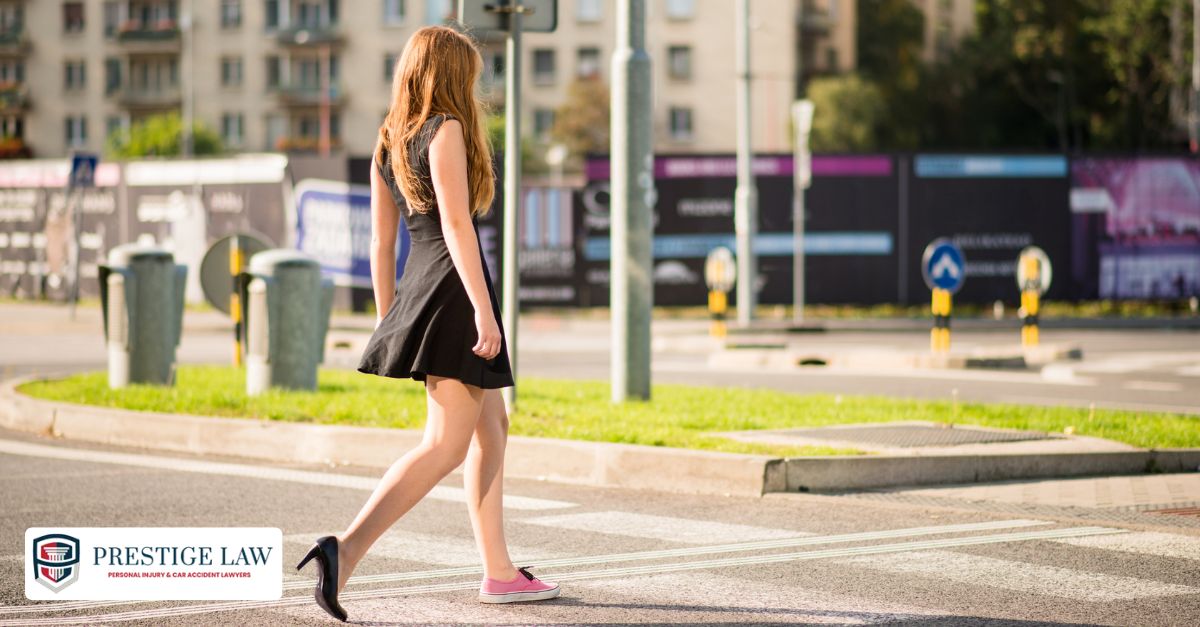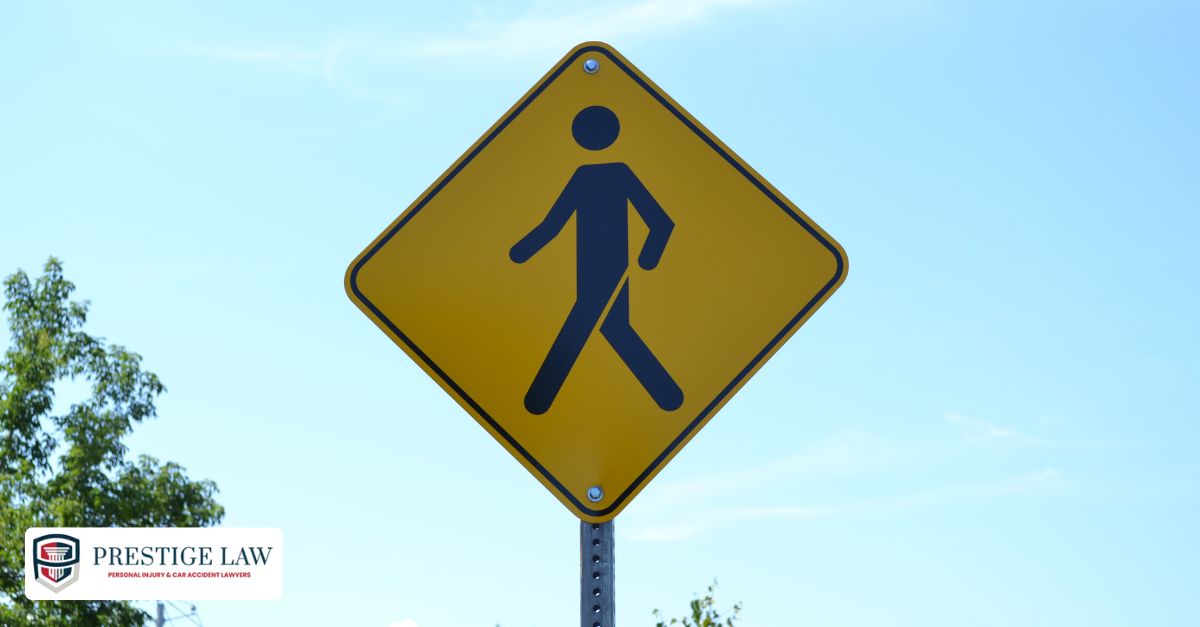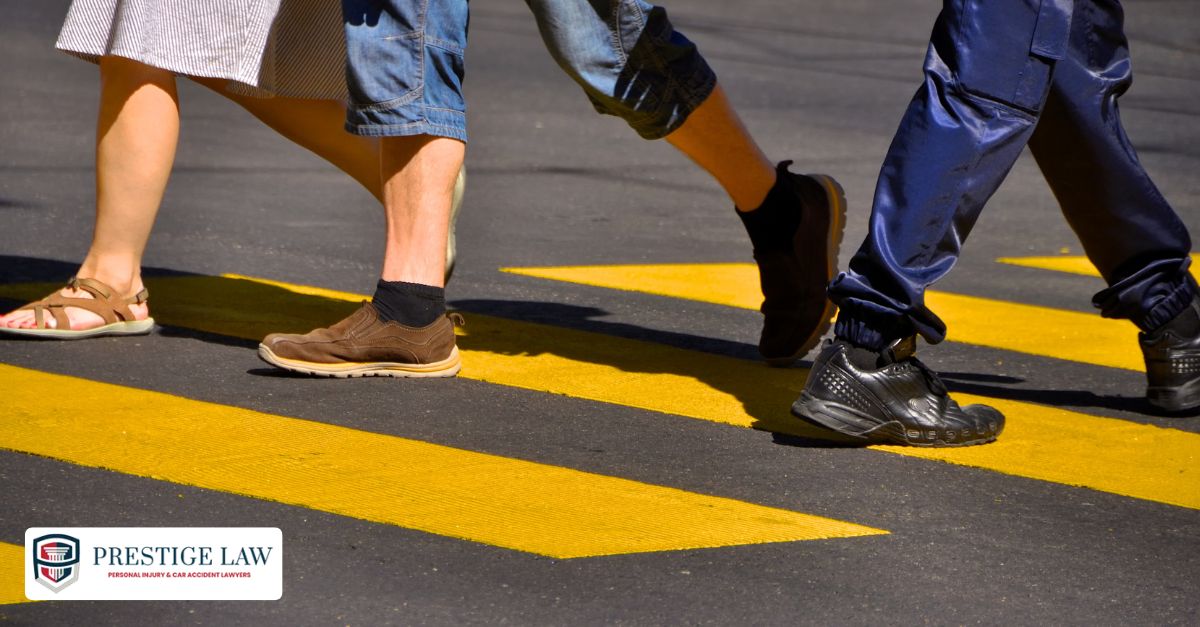
Jaywalking in California 2025: What’s Legal, What’s Not?
Published on / Category: Auto v. Pedestrian
If you’ve ever crossed mid-block or outside a crosswalk in California, you’ve probably wondered—am I breaking the law? For decades, the answer was yes. Jaywalking could get you fined, even if the street was empty.
That changed in 2023 with the passing of the Freedom to Walk Act, a law that gives pedestrians more freedom to cross safely without risking unnecessary tickets. But confusion remains. What exactly is legal? Can police still stop you? What happens if you’re involved in an accident while crossing?
This guide breaks down what the law says today, how it works in 2025, and what to do if you’re ticketed or injured as a pedestrian.

What is jaywalking?
Jaywalking means crossing a street outside of a marked crosswalk or against traffic signals.
Before January 1, 2023, doing this in California could get you ticketed or fined, even on an empty street.
These laws were originally created to keep pedestrians safe and reduce accidents. But since the Freedom to Walk Act took effect, Californians now have more freedom to cross streets safely, even if no crosswalk is marked.
That doesn’t mean you can cross anywhere, anytime, without consequences. Pedestrians are still expected to:
- Watch for oncoming traffic
- Avoid blocking vehicles
- Cross safely without creating danger
Common examples of jaywalking include:
- Crossing mid-block away from a crosswalk
- Crossing where no crosswalk exists
- Ignoring “Don’t Walk” signals at intersections
- Crossing streets against posted signs
The Freedom to Walk Act changed enforcement, but did not remove pedestrian responsibility. You can still be fined if you cross in a way that blocks traffic or puts yourself in danger.

The Freedom to Walk Act (AB 2147): What Changed?
For years, Californians risked getting jaywalking tickets even when crossing an empty street. Fines could reach $200 or more, and enforcement often felt unfair or inconsistent.
That changed when Governor Gavin Newsom signed Assembly Bill 2147—the Freedom to Walk Act—on September 30, 2022. The law, introduced by Assemblymember Phil Ting from San Francisco, officially took effect on January 1, 2023.
What the Law Actually Says
Under AB 2147, police can no longer stop or ticket pedestrians for crossing outside of a crosswalk unless:
“A reasonably careful person would realize there is an immediate danger of a collision with a moving vehicle or human-powered device.”
In simple terms:
- You can cross mid-block or outside a crosswalk if it’s safe.
- Police cannot ticket you just for crossing outside a crosswalk.
- You still need to watch for cars and avoid stepping into traffic.
Why This Change Was Needed
Supporters of the new law argued that the old jaywalking rules caused more harm than good, especially in low-income and minority communities.
Many tickets were issued in areas with few crosswalks, where people had little choice but to cross mid-block. These fines, which could cost hundreds of dollars, often hit people who could least afford to pay.
There were also reports of jaywalking stops escalating, leading to unnecessary confrontations, lawsuits, and protests over excessive policing.
Goals of the Law
Lawmakers and community advocates pushed for AB 2147 with several clear goals in mind.
They wanted to reduce unnecessary confrontations between police and pedestrians, especially in communities that often faced unfair or excessive enforcement.
They also hoped to make walking safer and more accessible by removing financial penalties for safe crossings.
Supporters believe the law promotes:
- Fairness in low-income and minority communities.
- Safer streets by encouraging walking without fear of fines.
- Reduced racial profiling and selective enforcement.
- Healthier communities, since more people may feel safer choosing to walk.
What This Means for You
Let’s say you’re downtown in Los Angeles and need to cross a street, but the nearest crosswalk is blocks away.
Before 2023, you could have been ticketed even if no cars were around.
Today, under the Freedom to Walk Act, you’re allowed to cross safely as long as you don’t block traffic or create a hazard.
This applies whether you’re in a busy city like San Francisco or a quiet town like Fresno. As long as you use common sense and cross safely, you won’t be breaking the law.
So is jaywalking still illegal in 2025?
Since the law changed in 2023, many people still wonder: Is jaywalking legal in California now?
The answer isn’t a simple yes or no.
It’s still technically illegal to cross outside a crosswalk, but police can only issue tickets if your crossing creates an immediate safety risk. That means most safe crossings no longer result in fines.
In short, safe jaywalking is legal, but dangerous jaywalking—like stepping into traffic or blocking moving cars—is not.
The Freedom to Walk Act limits police stops to situations where there’s a clear risk of a collision. So if you calmly cross an empty street, you’re within your rights.
However, you’re still required to yield to vehicles when you’re outside a crosswalk. Running into traffic or forcing drivers to brake suddenly can still result in tickets or legal consequences.
If you’re involved in a pedestrian accident, determining who is at fault depends on the situation. Even though the law protects safe crossings, it doesn’t excuse reckless behavior. Unsafe crossings can still hurt your case if you need to file an injury claim.
If you’ve been injured while walking—whether you were in a crosswalk or not—a pedestrian accident lawyer can help you understand your rights and explore your legal options.
Why Choose Prestige Law Firm for Your Pedestrian Injury Case?
If you’ve been hit by a car while walking, you’re likely facing more than just physical pain. Medical bills, lost wages, and worries about your immigration status can make everything feel overwhelming. That’s where Prestige Law Firm can help.
Led by attorney Paul Aghabala, Prestige Law is a California-based personal injury firm with over 23 years of experience fighting for injured pedestrians. Our team handles cases involving car accidents, motorcycles, rideshare vehicles, and unsafe property conditions.
What sets us apart is our personal approach. You won’t be passed off to junior staff. You’ll work directly with an experienced attorney who understands what you’re going through.
We also partner with California’s top medical providers, accident investigators, and legal experts to build the strongest case possible. Our process ensures that every step, from evidence collection to negotiation, is handled with care and expertise.
We know how important fast results are. That’s why we fight to recover medical expenses, lost wages, and other damages as quickly as possible. You pay nothing upfront—we only get paid if we win your case.
If you’ve been seriously injured while walking, contact Prestige Law Firm today for a free consultation. Let us help you get the justice and compensation you deserve.

Pedestrian Safety Tips Under the New Law
Even though jaywalking laws are more flexible in California, safe walking habits are still important. A legal crossing doesn’t mean it’s risk-free. Simple precautions can help you avoid accidents and protect your legal rights if something goes wrong.
Start by making eye contact with drivers before stepping into the street. Never assume they see you, especially at night or in poor visibility. Wearing bright or reflective clothing can help drivers spot you more easily.
Avoid distractions like phones or headphones while crossing. You need to stay fully aware of your surroundings, especially in busy areas or low-light conditions.
Whenever possible, use crosswalks—whether marked or unmarked—at intersections. These are generally the safest places to cross and give you the legal right of way.
Just because safe jaywalking is allowed doesn’t mean every crossing is a good idea. Always stop at the curb, look both ways, and wait for a clear gap in traffic before stepping off the curb.
Never rush into the street. If you step out suddenly and a driver doesn’t have time to stop, you could be found at fault. That could reduce or even eliminate your ability to collect compensation for your injuries and medical bills.
Conclusion
California’s Freedom to Walk Act has changed how jaywalking is enforced, but it hasn’t removed the risks that come with crossing the street. In 2025, safe jaywalking won’t get you a ticket, but crossing unsafely—like stepping into traffic—can still lead to serious consequences.
If you’ve been hurt while walking, whether you were in a crosswalk or not, you may have the right to seek compensation. Pedestrian accidents often lead to serious injuries, missed work, and overwhelming medical bills.
At Prestige Law Firm, we focus on serious injury claims. We do not handle minor jaywalking tickets or citations.
However, if you’ve been seriously injured because of a careless driver or unsafe conditions, our team is ready to fight for you. We have over two decades of experience helping injured pedestrians recover compensation for medical care, lost income, and other damages.
If you were hit by a car while crossing the street—whether legally or not—we can help you understand your rights and build a strong case.
Call us today at (818) 424-4620 or contact us online for a free consultation. You pay nothing upfront—we only get paid if we win your case.
FAQs
What does AB 2147 mean for pedestrians?
It means you are allowed to cross the street outside of a crosswalk without getting a ticket, as long as you do so safely and without creating a traffic hazard.
Can you still get a ticket for jaywalking in California?
Yes, but only if your crossing creates a safety risk, blocks traffic, or forces vehicles to stop suddenly to avoid hitting you.
How much is a jaywalking ticket in California?
Ticket amounts can vary, but fines typically range from $197 to $250, depending on the city and the circumstances of the violation.
Get Started Today!
24 hours a day / 7 days a week / 365 days a year
Contact our Los Angeles attorneys for a free consultation today
